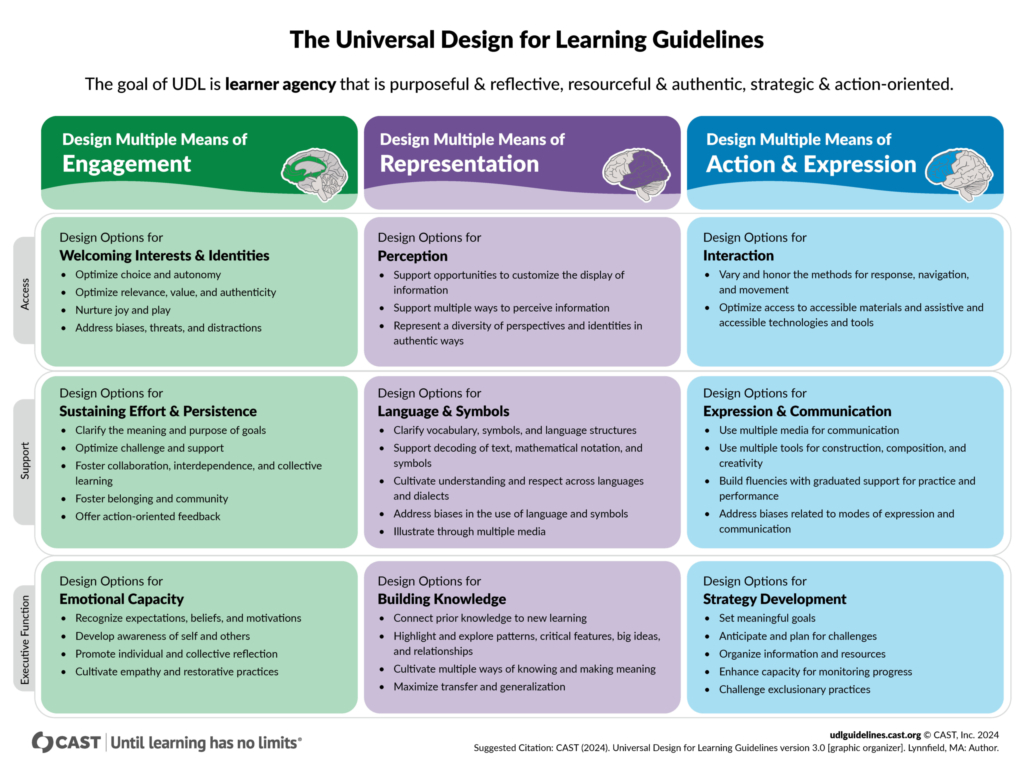
Updated Universal Design for Learning (UDL) Guidelines
The Universal Design for Learning (UDL) framework developed by CAST helps “improve and optimize teaching and learning for all people based on scientific insights into how humans learn” (2024). The framework is meant to act as a guide during the design of instructional activities, assessments and learning environments in general that can support learners in purposeful, strategic and authentic ways. “When environments are intentionally designed to reduce barriers, every learner can engage in rigorous, meaningful learning” (CAST, 2024).
Building on previous versions, this fifth iteration of the UDL Guidelines (3.0) stresses confronting and tackling significant barriers embedded in biases and practices of exclusivity. The update focuses on changes in terminology and the expansion of collective learning. It shifts from educator-centered to learner-centered language by using vocabulary that can be used interchangeably between educators and learners. In the UDL goal statement, “expert-learner” has shifted to “learner-agency” to include every learner. This change builds upon the idea of expert learning without implying exclusivity or undervaluing the importance of collective learning. Agency refers to the learners’ capacity to interact within the learning environment to adjust mental and behavioral processes that enable and promote comprehension of content. Supporting learner agency involves identifying aspects where biases may exist, for example with culture and identity, that may otherwise inhibit learners. Additionally, “provide” has been removed from the three principles and all nine guidelines. Instead, “design” is used to show that the UDL Guidelines should be used to co-create learning aiming to give every learner more voice, choice, and autonomy in their learning.
- “Building Knowledge” replaces “Comprehension” to broaden thinking around the approaches used to attain information, knowledge, and meaning.
- “Interaction” replaces “Physical Action” to account for interactions with content, the environment, and members of the community.
- “Strategy Development” replaces “Executive Function” because “Executive Function” expands beyond a single guideline. It spans each of the three neural networks aligned to the three principles and is now accurately integrated across all three principles.
- “Welcoming Interests & Identities” replaces “Recruiting Interests” to emphasize the learner, their varied identities, and what they can contribute.
- “Emotional Capacity” replaces “Self Regulation” to improve clarity of this guideline and decrease potential bias.

